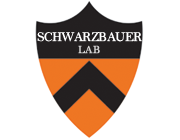Modulation of cell-fibronectin matrix interactions during tissue repair.
Type
Environmental signals from the extracellular matrix (ECM) are transmitted by cell surface receptors that connect to the actin cytoskeleton and to multiple intracellular signaling pathways. To dissect how the ECM regulates cell functions, we are using a three-dimensional (3D) fibrin-fibronectin matrix, resembling the wound provisional matrix. Fibroblasts adhere to fibronectin in this matrix via concomitant engagement of alpha 5 beta 1 integrin receptors and syndecan-4, a transmembrane proteoglycan. An adhesive phenotype is developed with actin stress fibers and activation of focal adhesion kinase (FAK) and Rho GTPase. Lack of syndecan-4 engagement, as occurs in the presence of the ECM protein tenascin-C, promotes a motile phenotype; FAK and Rho signaling are downregulated and filopodia are extended. Fibronectin matrices have distinct effects on two other receptors: alpha 4 beta 1 and beta v beta 3 integrins. Although alpha 4 beta 1 does not naturally support strong cell interactions with a fibrin-fibronectin matrix, binding is dramatically enhanced by proteolytic cleavage of fibronectin. Conversely, activity of alpha v beta 3 is stimulated by multimeric fibronectin fibrils showing that the organization of fibronectin differentially affects integrin functions. Thus, deposition of additional ECM components, expression of co-receptors for ECM, cleavage of adhesive proteins, and the architecture of the ECM microenvironment are different mechanisms for modulating cell responses to fibronectin matrix.

